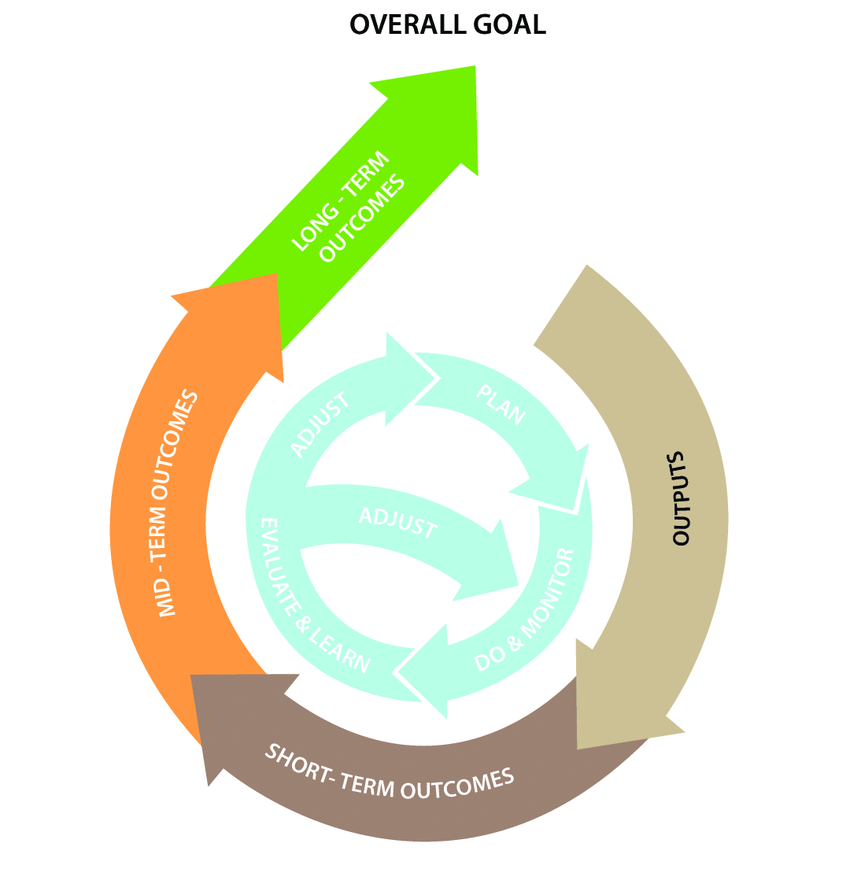Evidence-based decision-making is not a catchphrase. It is a process that involves the availability of data, analytical thinking, and evaluation of information to determine the most effective and efficient approach to address the problem in the context.
It is universally acknowledged that data is precious and mining this data to gather knowledge is equivalent to digging up gold. And an organization seeking to scale can do so only on the strength of existing evidence, both primary and secondary.
At Miracle Foundation India, the past couple of months has been a significant one for the way we have strengthened our Monitoring, Evaluation, and Learning (MEL) system and the change it has brought about. We have gradually moved from a focus on data being primarily for donor reporting or creating dashboards to using data for programmatic course corrections and decision making.
How did we do this?
Ensuring active participation of program team in developing Indicators and M&E Plans
Selecting the right indicators for measuring the success of the program is the first step towards building a robust MEL system. And we did this with the help of the program team, keeping them at the center stage. They know the programs best so it becomes important to understand the type of information that they need, what they want to know, this way we can improve the validity of indicators and usability of data collected. M&E just brings in the technical aspects of defining these requirements and scientifically measuring and validating what the program team is asking.
Building common understanding within the organization on the indicators and their measurements
Right from the beginning, we worked with the program team to improve know-how on monitoring and evaluation. We did this by defining the process, explaining M&E terminology and LFA, and sharing relevant resource materials. AS part of this we conduct designated Master Classes and Q&A sessions in smaller groups for more engaged learning.
These initiatives help in building common understanding within the organization on the indicators, their definitions, and measurement method leading to more streamlined data collection, improving data quality, and better reporting timelines.
Building ownership to get accurate and reliable data
In a large organization like Miracle Foundation India, where there are multiple programs, bringing uniformity in defining indicators may become a challenge, because teams can feel uncomfortable dealing with so many indicators and data. Sometimes spending so much time and energy on collecting, consolidating, and reporting data can get frustrating.
We created a structured space (such as meetings, workshops, Question and Answer sessions) to share their thoughts, experience, feedback, understand from where their thoughts are coming from, addressing the cause of the issues and challenges has helped a lot in building the ownership of data.
Sharing of the consolidated analytical report on Output and Outcomes
Often M&E is seen as policing and request of data from the team is seen as additional work. This perception can be changed if these ‘’Data’’ are processed and constructed as ‘’Information’’ and presented back with one report and with regularity. At Miracle Foundation, data collected from the program is further verified, cleaned, processed, analyzed, collated in a meaningful way, and shared back to the team through consolidated analytical reports and Dashboards. And this is done every single month with a fixed timeline. This simply increases the accessibility of a new set of information on their program performance indicators which they can use for taking decisions to improve program performance.
Driving from the top
By in from both program teams and the leadership is critical. Our executive team reviews data on certain core indicators every single month to understand how we as an organization are progressing towards our goals. Program leaders are asked to present the numbers, compare with targets and explain the big picture. If the report is delayed even by a day, the MEL team has to inform the executive team in advance with why? Having a hard deadline keeps program teams accountable for having a streamlined data flow to get accurate information on time. The leadership team emphasizing the importance of data in this way and seeing them actively review and use the data for decision-making makes MEL an ingrained part of our working culture, instead of just an added task that doesn’t go anywhere.
Engaging with the program team to foster learning
Every single month we conduct an M&E Review meeting with each of the program team. During these meetings program leads are asked to present the status of the program based on data reported – comparing with the targets; observing trends; identifying gaps, challenges, bottlenecks within the project along with the possible reasons for these gaps and challenges and how to address them (Ex. - the requirement of training, or other capacity-building initiatives, change in strategy, etc.) With this line of thinking, these meetings are used as a learning ground, guiding questions are thought triggering which helps the team in using this set of information for making decisions and steps towards improving program efficiency and effectiveness.
We continue to learn our own MEL journey and work towards strengthening it!
Pritam Prasun,
Associate Director, MEL

